
Warhammer 40,000 is a miniature wargame produced by Games Workshop. It is the most popular miniature wargame in the world, and is particularly popular in the United Kingdom. The first edition of the rulebook was published in September 1987, and the tenth and current edition was released in June 2023.

Games Workshop Group is a British manufacturer of miniature wargames, based in Nottingham, England. Its best-known products are Warhammer and Warhammer 40,000.
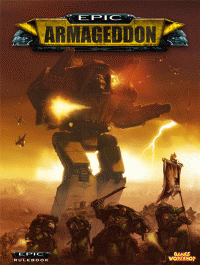
Epic is a series of tabletop wargames set in the fictional Horus Heresy and Warhammer 40,000 universes. Whereas Warhammer 40,000 involves small battles between forces of a few squads of troops and two or three vehicles, Epic features battles between armies consisting of dozens of tanks and hundreds of soldiers. Due to the comparatively larger size of the battles, Epic miniatures are smaller than those in Warhammer 40,000, with a typical human being represented with a 6mm high figure, as opposed to the 28mm minis used in Warhammer 40,000. Since being first released in 1988 as Adeptus Titanicus, it has gone through various editions with varying names.

Space Crusade is an adventure board game produced by Milton Bradley together with Games Workshop and was first made in 1990. It was produced in the UK and available in some other countries including Finland, Ireland, France, Spain, Denmark, Australia, Hellas and New Zealand. In Germany, Italy, Belgium and the Netherlands, it is known as Star Quest.
Inquisitor was a tabletop miniatures game based in Games Workshop's Warhammer 40,000 universe. Whereas the main line of Warhammer 40K games is based on squad based tactical warfare, Inquisitor focused on a small group of player characters akin to many role-playing games. Inquisitor miniatures are no longer produced by Games Workshop but, whilst they were, the game had its own website and 54 mm scale models were available as "Specialist Games" from the Games Workshop catalogue.

The Black Library is a division of Games Workshop which is devoted to publishing novels and audiobooks set in the Warhammer Fantasy Battle, Warhammer Age of Sigmar and Warhammer 40,000 fictional universes. Some of Black Library's best known titles include the Gaunt's Ghosts and Eisenhorn series of novels by Dan Abnett and the Gotrek and Felix series by William King and Nathan Long.
Graham McNeill is a British novelist and video game writer. He is best known for his Warhammer Fantasy and Warhammer 40,000 novels, and his previous role as games designer for Games Workshop.
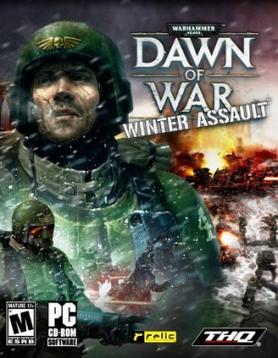
Warhammer 40,000: Dawn of War – Winter Assault is the first expansion to Warhammer 40,000: Dawn of War for the PC developed by Relic Entertainment and published by THQ. Based on Games Workshop's tabletop wargame, Warhammer 40,000, Dawn of War: Winter Assault was released on September 23, 2005. Some time after its initial release, Winter Assault and Dawn of War were coupled together in a double pack which featured some art on a fold out cover, an Ork with a flamethrower, or a group of Imperial Guard tanks lined up for attack. Though Winter Assault required the base game to play, its follow-up expansions, Dark Crusade and Soulstorm were stand-alone, not requiring the base game.
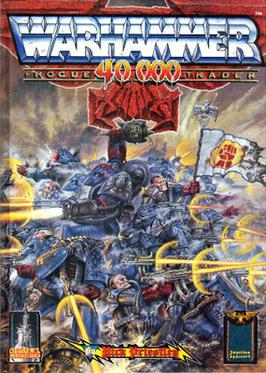
Warhammer 40,000: Rogue Trader is the first edition rule/source book for the Warhammer 40,000 miniature wargame by Games Workshop. The subtitle "Rogue Trader" was dropped in subsequent editions.

Imperial Armour is a series of rules supplements to the Warhammer 40,000 table-top game, along with an associated range of vehicle-size resin model kits. Both are produced by Forge World, a subsidiary company of Games Workshop.
Aeronautica Imperialis is the name of two tabletop miniature wargames set within the Warhammer 40,000 universe. The games depict aerial warfare between different factions in the setting, either as one-off battles or as part of a larger narrative campaign. The first edition was released in January 2007 by Forge World, a division of the British gaming company Games Workshop. The second edition, a relaunch via Games Workshop, was released in August 2019 with a different ruleset and new, larger models.
Warhammer 40,000 Roleplay is a role-playing game system with multiple source books set within the Warhammer 40,000 universe. The first game using the system, Dark Heresy, was created by Black Industries, which closed soon after the initial release. Official support by Fantasy Flight Games was discontinued in September 2016. The license was later acquired by Ulisses Spiele, who published a new game, Wrath & Glory, in 2018.
Warhammer 40,000 comics are spin-offs and tie-ins based in the Warhammer 40,000 fictional universe. Over the years these have been published by different sources. Originally appearing in Inferno! and Warhammer Monthly, the initial series of stories have been released as trade paperbacks by Black Library, who have also released original graphic novels and shorter prestige format comics.

Warhammer 40,000: Dawn of War – Soulstorm is the third expansion to the real-time strategy video game Warhammer 40,000: Dawn of War, developed by Iron Lore Entertainment. Like its predecessors, Soulstorm is based on Games Workshop's tabletop wargame Warhammer 40,000, and introduces a multitude of new features to the Dawn of War series, including two new playable factions in the form of the Imperial Sisters of Battle and the Dark Eldar. It is a stand-alone game and does not need the original Dawn of War disc to run, but players must have the prior games installed and valid cd-keys in order to play as anything but the two new factions online.
The Horus Heresy is a series of science fantasy novels set in the fictional Warhammer 40,000 setting of tabletop miniatures wargame company Games Workshop. Penned by several authors, the series takes place during the Horus Heresy, a fictional galaxy-spanning civil war occurring in the 31st millenium, 10,000 years before the main setting of Warhammer 40,000. The war is described as a major contributing factor to the game's dystopian environment.

Warhammer 40,000: Dawn of War II – Chaos Rising is a real-time strategy video game developed by Relic Entertainment and published by THQ, and the sequel expansion of Warhammer 40,000: Dawn of War II. The game was released on March 11, 2010 for Games for Windows.

Warhammer 40,000: Dawn of War II – Retribution is the stand-alone second expansion to Warhammer 40,000: Dawn of War II, part of the Warhammer 40,000: Dawn of War series of real-time strategy video games. Set in Games Workshop's Warhammer 40,000 fictional universe, the single player campaign is playable with multiple races.

Warhammer 40,000: Conquest was a Living Card Game (LCG) produced by Fantasy Flight Games, set in Games Workshop's Warhammer 40,000 universe. It was announced in March 2014 and was released October 3, 2014. The game featured two players competing to win a series of battles on a different planets while simultaneously securing the resources of other planets that will have battles on subsequent turns. Fans of the game praised the strategic element of having multiple distinct battle fields as a feature that distinguished it from other card games. On September 9, 2016, Games Workshop announced that Conquest would be discontinued in February 2017, as a result of Games Workshop's failure to renew Fantasy Flight Games' contract because of a conflict between Games Workshop and Fantasy Flight Games' parent company, Asmodee. The game still has a small community of players who play with the cards that were printed before the game's discontinuation in 2017, and some fans have made unofficial expansions to expand the small card pool.
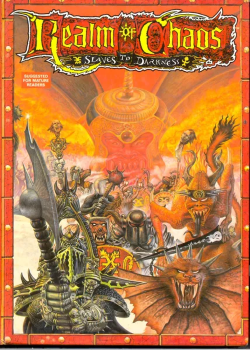
Realm of Chaos: Slaves to Darkness is a 1988 role-playing game supplement for Warhammer Fantasy Roleplay published by Games Workshop.
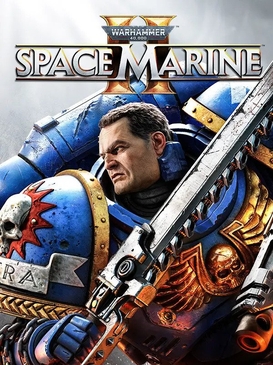
Warhammer 40,000: Space Marine II is an upcoming third-person shooter hack-n-slash video game developed by Saber Interactive and published by Focus Entertainment. A sequel to Warhammer 40,000: Space Marine (2011), the game is scheduled to be released for PlayStation 5, Windows, and Xbox Series X and Series S on 9 September 2024.
















